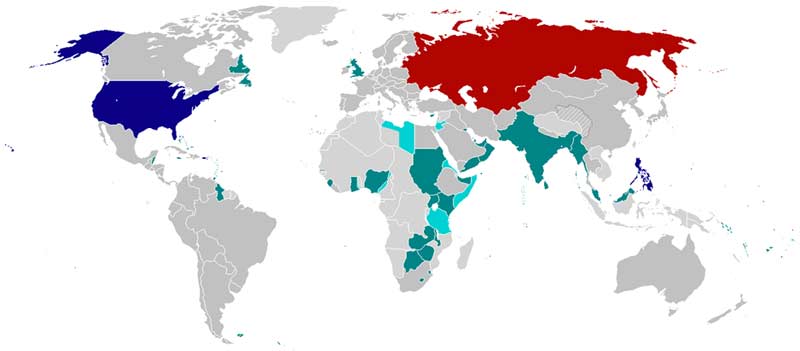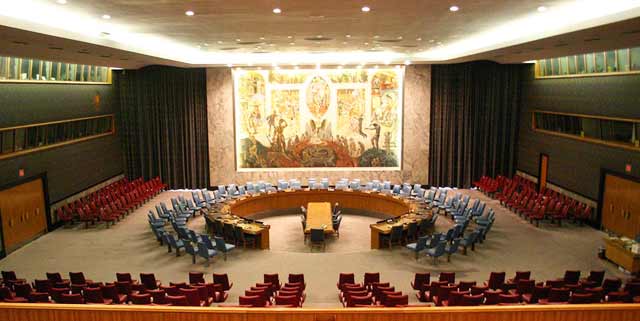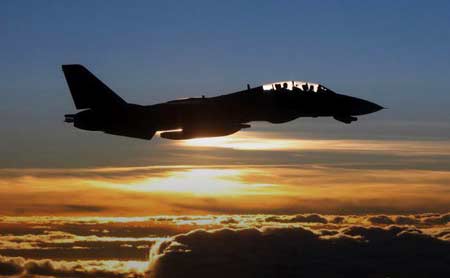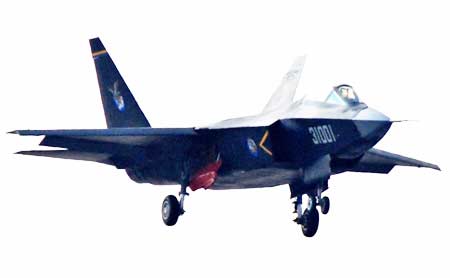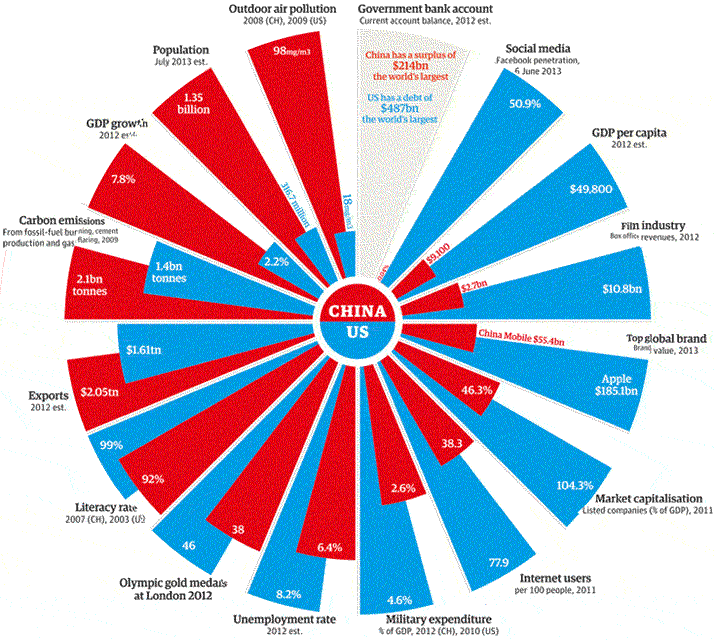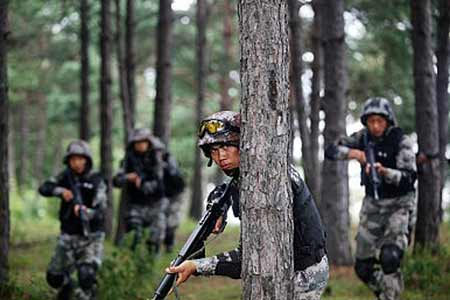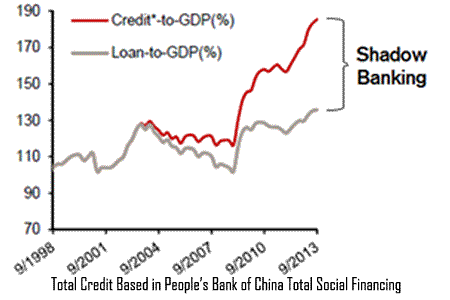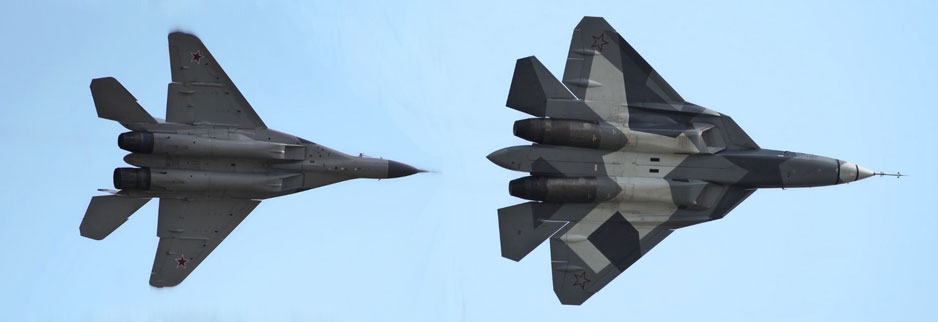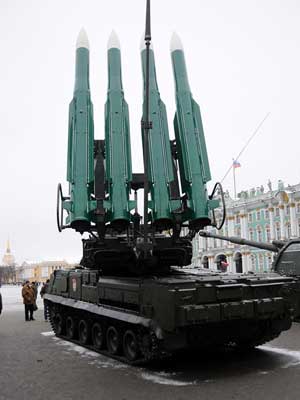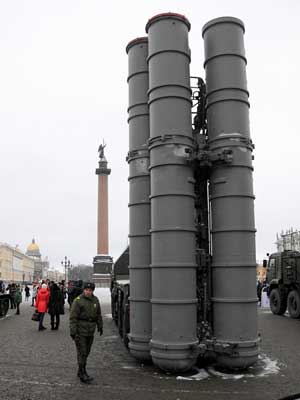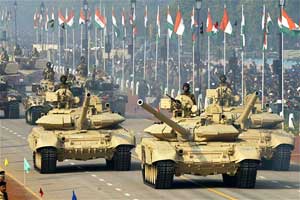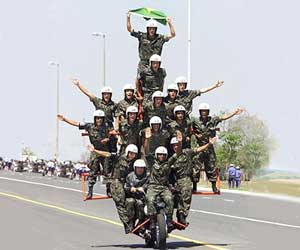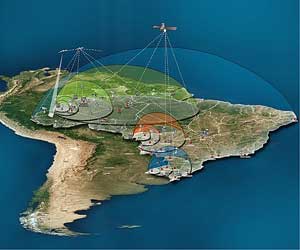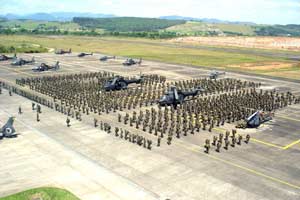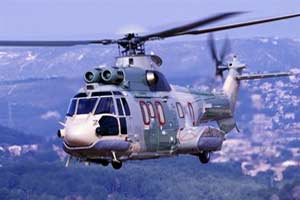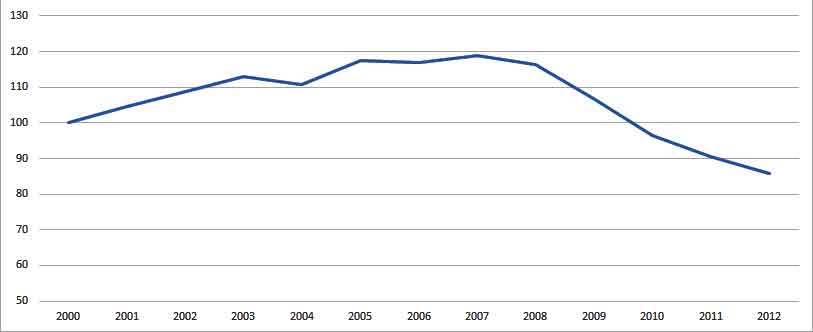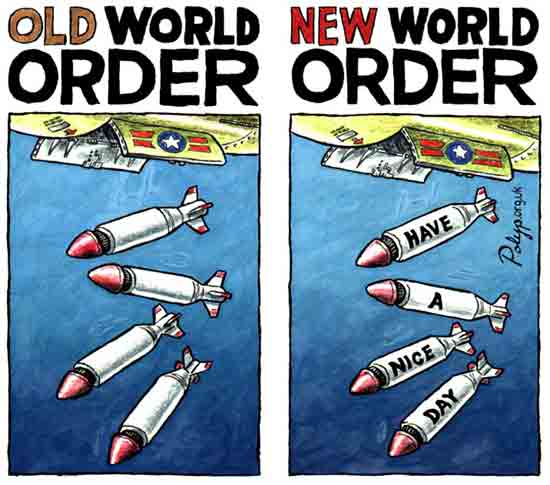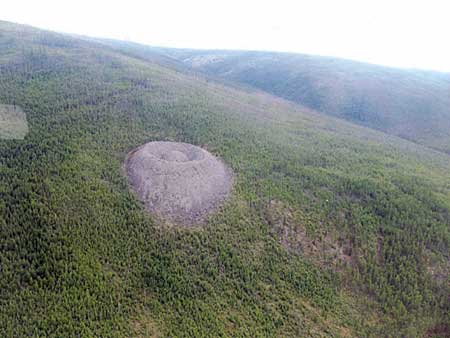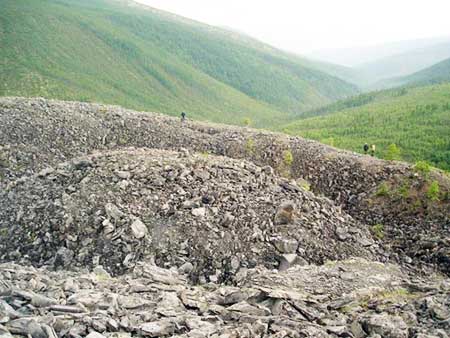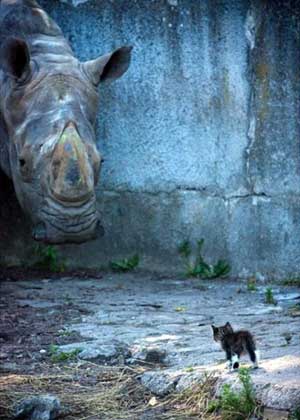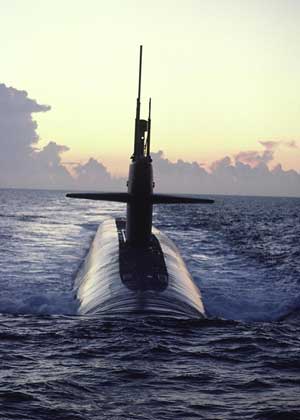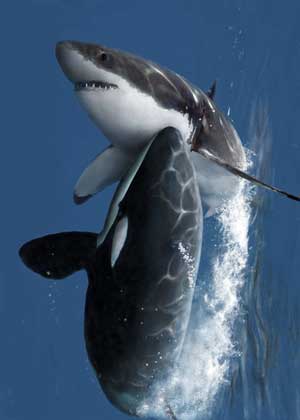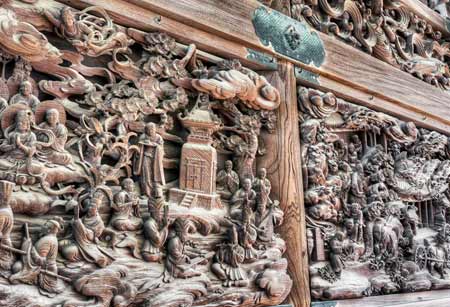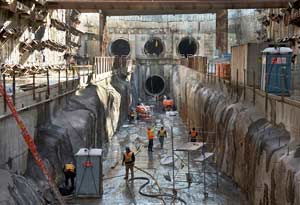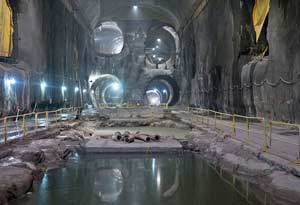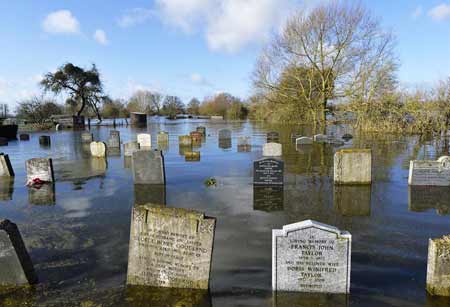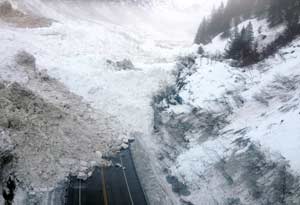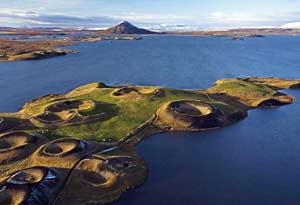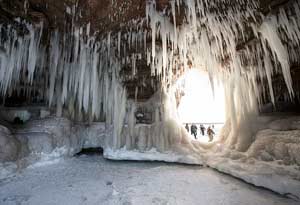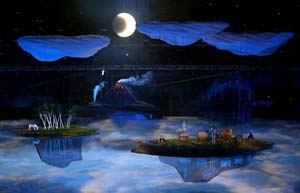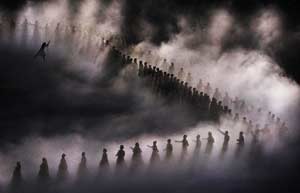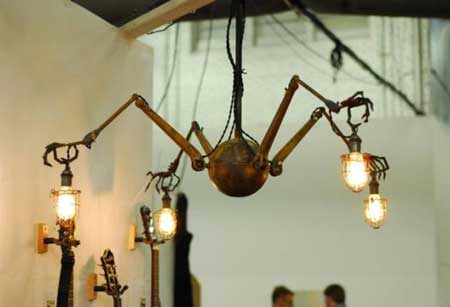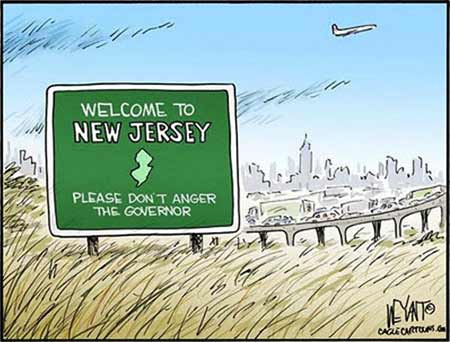According to this map by William T R Fox, the United States (Blue), the Soviet Union (Red), and the British Empire (Turquoise) were superpowers.
Fox was a US pioneer in establishing the systematic study of statecraft and war as an academic discipline.
There’ve been very few genuinely important events in the 4-billion-year saga of life on Earth:
single-celled life, multi-celled life, differentiation into plants and animals, movement from water to land, advent of mammals, consciousness.
The lessons of history suggest civilisations move in cycles: Babylonians, Sumerians, Egyptians, Romans, China.
We’re obviously in an upward cycle now; hopefully, that remains true—but it may not.
It’s important that we attempt to extend life beyond Earth—it’s the first time in our 4-billion-year history that it’s been possible.
That window could be open for a long time (hopefully it is) or it could be open for a short time. We should err on the side of caution and do something now.
The future of humanity will bifurcate: either it becomes multi-planetary, or it remains uni-planetary. And eventually, there WILL be an extinction event.
Ordnungsmacht
Feb. 14, 2014
Ordnungsmacht means, essentially, “regulatory power“—a Superpower, in other words. (Rather than visions of Marvel Comics, think of a successful and ambitious country.)
A Sampling of “Superpower” Definitions
A Superpower is:
- World English Dictionary: An extremely powerful state.
- Oxford Dictionary: A very powerful and influential nation.
- Dictionary.com: An extremely powerful nation, especially one capable of influencing international events and the acts and policies of less powerful nations.
- Hubert Védrine (French Minister): (actually speaking of “Hyperpower”) A country who greatly exceeds any other in its political environment along several axes.
- Merriam Webster: An extremely powerful nation; specifically, one of a very few dominant states in an era when the world is divided politically into these states and their satellites.
- “Answers:” In order: United States, China, Russia, India, UK, and France who all lead Military and Political ranks, but the US is undisputed leader.
- Professor Paul Dukes: A country able to conduct a global strategy that includes the possibility of destroying the world; it commands vast economic potential and influence and presents a universal ideology.
- Alice Lyman Miller (Professor of National Security Affairs at the Naval Postgraduate School): A country that has the capacity to project dominating power and influence anywhere in the world, and in more than one region of the globe at a time; the basic components of superpower stature may be measured along 4 axes of power: military, economic, political, and cultural (or what political scientist Joseph Nye has termed “soft power”).
- Wikipedia: A superpower is a state with a dominant position in international relations characterised by unparalleled ability to exert influence or project power on a global scale through means of military and economic strength as well as diplomatic and soft power influence; traditionally Superpowers are pre-eminent among Great Powers with the term first applied to the British Empire, the USA and the Soviet Union. However, following World War II and the Suez Crisis in 1956, the British Empire’s status as a Superpower diminished; for the duration of the Cold War the US and the Soviet Union came to be generally regarded as Superpowers, dominating world affairs, but after the Cold War and the collapse of the Soviet Union in 1991, only the US remained a Superpower. [A Superpower’s ability is unparalleled? Yet there were 3, then 2, and after that, 1?]
- Kim Richard Nossal (Queen’s University): A political community that occupies a continental-sized landmass, has a sizeable population (relative to other major powers), a superordinate economic capacity (including ample indigenous supplies of food and natural resources), enjoys a high degree of non-dependence on international intercourse; and, most importantly, has a well-developed nuclear capacity (with second strike capability).
For myself, I prefer this definition:
- Samuel P Huntington: A country with pre-eminence in every domain of power—economic, military, diplomatic, ideological, technological, and cultural—with the reach and capabilities to promote its interests in virtually every part of the world.
If You Aren’t a Superpower, What Can You Aspire to?
A Great Power is recognised as exerting influence on a global scale. Great Powers characteristically possess military and economic strength, as well as diplomatic and soft power influence, which may cause Small Powers to consider the Great Powers’ opinions before taking actions of their own. The term was first used to represent the more important powers in Europe during the post-Napoleonic era. The Great Powers constituted the “Concert of Europe” and jointly enforced postwar treaties. The division between Small Powers and Great Powers was later fomalised. Since then, international balance of power has shifted a number of times, most dramatically during World Wars I and II. While some nations are widely held to be Great Powers, others’ inclusion sparks controversy. (There’s no definitive list.) Alternate terms used instead of Great Power are World Power or Major Power, though these terms are less precise because they’re also often used interchangeably with Superpower.
Wikipedia TALK on Great Powers:
- Germany, India, and Japan (and possibly Brazil) are Great Powers rather than Superpowers because they’re economic powers only (with modest cultural and military influence).
- The UK and France are almost Superpowers but aren’t; that probably makes them Great Powers (though some place them in the Middle Powers).
- Spain and Italy are Middle Powers though some think that as a G8 member, Italy should be a Great Power; however, others strongly disagree.
- Some think to be a Great Power you must have a nuclear deterrent and be a permanent member of the UN Security Council, limiting Great Power status to China, France, Russia, UK, US.
- Germany, Japan, Brazil, and India aren’t permanent members of the UN Security Council, but many consider them to be Great Powers.
- Some think that there’s NO Superpower at the present time.
- Some think India, Brazil, the EU, China, and/or Russia (and perhaps even the US if you think it’s no longer a Superpower now) may become Superpowers during the 21st century due to enlarging markets, growing military strengths, economic potentials, and influences in international affairs, placing them in a Potential Superpowers category.
For many analysts, the G20 is a more representative and important body than the G8, in no small measure because the G20 membership comprises some of the largest and fastest-growing economies from the southern hemisphere, including the BRICs countries of Brazil, Russia, India and China), which together account for a significant proportion of the world economy and whose rise has been a key element in the shifting geopolitical landscape in recent years. The BRICs’ corporations and markets led the global economic reversal, contributing to a new multi-lateralism (important given the apparent decline of US unilateralism). Yet, though they constitute an embryonic bloc, they’re unlikely to become any more cohesive or unanimous given historical and structural differences, distinctive societal values and norms, and economic and diplomatic competitiveness. The large and deep societal imbalances in some of the BRICs, especially China (124 male births to 100 female) and India (108 to 100) have long-term implications for human development, regional development. and security.
Tensions are apparent in the BRIC Summits which cover a broad canvas reflective of their diversity of interests and institutions. Conversely, BRICs have deepened their collaboration by developing a range of inter-governmental networks spanning finance ministers and central bank governors, cooperatives, development banks, judicial and statistical officials, along with business forums and think tanks. This sounds like a good beginning and they may very well increase their powers regionally and globally. But as a group, they’re unlikely to reach the top very soon.
Who Can Build Enough Coalitions, Consensus, and Consultations to Become (or to Remain) a Superpower?
United States
- F-35 Joint Strike Fighter
In a fast-moving aerial battle, the JSF “is a dog, overweight and underpowered.” Even the best-manufactured JSF is a 2nd-rate fighter where it actually matters—in the air in life-or-death combat against a determined foe. America’s newest stealth warplane and planned mainstay of the Air Force and air arms of the Navy and Marine Corps, was no match for Chinese warplanes in a 2008 war simulation. Despite a vaunted ability to evade detection by radar, JSFs were blown out of the sky. “Inferior acceleration, inferior climb [rate], inferior sustained turn capability, lower top speed: can’t turn, can’t climb, can’t run.” Engineering compromises forced by an unprecedented need for versatility have taken a toll on the new jet’s performance. Largely because of the vertical-takeoff fan required by the Marines’ demands, the JSF is wide, heavy, and has high drag. Neither as quick as an F-16 nor as toughly constructed as an A-10, this jack-of-all-trades is master of none. Arguably the worst new jet fighter in the world (which one Australian military analyst-turned-politician claimed would be “clubbed like baby seals” in combat) could soon also be America’s only new jet fighter.
- J-31 – China’s Apparent Clone
At least twice since 2007 Chinese hackers are reported to have stolen data on the F-35 from developers’ poorly-guarded computer servers, potentially including detailed design specifications. Some of the Internet thieves “appear to be tied to the Chinese government and military,” then-Defense Secretary Chuck Hagel claimed. The new Chinese plane, built by the Shenyang Aircraft Corporation, bears an uncanny external resemblance to the F-35: same twin tail fins, same chiselled nose, same wing shape—but optimised for speed, acceleration, maneuverability and flying range (as the F-35 is not).
The United States has an elected government, which is legitimate, and there’s a separation of legislative, judicial, and executive powers. Plus, it spends more on Military than the next 4 or 5 nations combined. English is a commonly-used language for business.
| World-Wide Military Expenditures – 2011 | |||||
|---|---|---|---|---|---|
| Country | GDP | Rank | % GDP Spend on Military | Rank | Total Spend on Military |
| WORLD | $70,155,374,950,000 | $2,157,172,000,000 | |||
| United States | $14,120,000,000,000 | 2 | 5.2% | 17 | $741,200,000,000 |
| China | $8,818,000,000,000 | 3 | 4.3% | 23 | $380,000,000,000 |
| India | $3,680,000,000,000 | 5 | 2.5% | 62 | $92,000,000,000 |
| Russia | $2,116,000,000,000 | 8 | 3.9% | 27 | $82,500,000,000 |
| Saudi Arabia | $590,900,000,000 | 23 | 10.0% | 3 | $59,090,000,000 |
| France | $2,094,000,000,000 | 9 | 2.6% | 57 | $54,444,000,000 |
| United Kingdom | $2,123,000,000,000 | 7 | 2.4% | 63 | $50,952,000,000 |
| Turkey | $879,900,000,000 | 17 | 5.3% | 16 | $46,634,700,000 |
| Germany | $2,815,000,000,000 | 6 | 1.5% | 102 | $42,225,000,000 |
| Korea, South | $1,362,000,000,000 | 13 | 2.7% | 53 | $36,774,000,000 |
| Brazil | $2,010,000,000,000 | 10 | 1.7% | 89 | $34,170,000,000 |
| Japan | $4,149,000,000,000 | 4 | 0.8% | 150 | $33,192,000,000 |
Paul Burton, director at IHS Jane’s Aerospace, Defense and Security, said: “With military budgets among many of the major NATO nations due to continue to contract over the next 12 months, the centre of gravity of defence expenditure is expected to continue to shift south and east in 2014, following the trend of global economic expansion.”
The US and China Compared
In 2011, the average annual household income in China, converted into US dollars, was $10,220, compared with $84,300 in the US (the median US income is $47,300). China has about 4 times the population of the US. The US has twice the military expenditures and twice the internet user rate. Life expectancy is higher in the US and there are 25% more billionaires (in total). One of the few similarities is average household assets: in both China and the US, the average family’s assets are about 8 times its average income. Another similarity? A historic credit boom, unregulated lenders promising high, “risk-free” returns, and surging property prices that make it all go—is this the US in 2004, or China in 2014? Chinese local governments and developers have gone on a borrowing binge the past 5 years to build new infrastructure and new cities, including ghost ones. In other words, China is getting rich now by building the things it needs to be rich, and putting it all on the credit card. The result, as the ratings agency Fitch points out, has been a bigger credit increase relative to GDP than just about anywhere on Earth or anytime in history. Total credit shot up from around 120% of GDP in 2008 to 190% today (2014)—most of it from so-called “shadow banks” that aren’t regulated. In comparison, US credit went up only 40 percentage points of GDP in the 5 years before their housing bubble popped.
In some countries, the percentage of survey respondents who believe that China has already surpassed or will surpass the US is significantly greater than 50%, including Spain (71%), France (70%), Canada and Australia (67%), and the UK and Germany (66%). Two-thirds of Chinese survey respondents consider their home country as being on top.
One encouraging statistic is that younger people in both nations are more likely to express favourable sentiment toward the other.
Many people around the world believe the US will soon cede its role as the world’s dominant Superpower to China, according to a new report from the Washington, DC-based nonprofit Pew Research Center. The report is based on responses from nearly 38,000 individuals in 39 countries and was conducted early in 2013. In 18 countries, at least 50% of survey respondents say that China either has replaced or will soon replace the US as the world’s leading Superpower. In only 6 countries, a majority or plurality of survey respondents say that China will never overtake the US as the top superpower. (Bear in mind that polls don’t create reality, and occasionally don’t even reflect it.)
China
At almost 10 million square kilometres, China is the 3rd largest country (after Russia and Canada). Its 2.25 million troops form the world’s largest armed force (though not the most advanced one). China’s reputation as a major military power is crowned by possession of nuclear weapons capable of all ranges and delivery modes. Its new high-speed manoeuvring warhead is a “great concern” to the US because it appears designed for use with both nuclear and conventional Chinese military forces. The recently tested hypersonic glide vehicle is basically a ballistic missile-launched system that gets the payload fast and high, pitches over, dives to hypersonic speed, and basically just glides to the target at speeds of up to Mach 10 or nearly 8,000 miles per hour. Hypersonic vehicles of any kind—whether gliding or cruising—are extremely difficult to defend against because time is compressed across initial detection, tracking, and then fire control. Ultra high speeds make the manoeuvring missiles difficult to counter with missile defence interceptors. Chinese military commentators say the vehicle is planned for use in potential attacks against aircraft carriers at sea. Unless the US military develops directed energy weapons, including lasers and pulsed rail guns, they don’t have a counter to China’s hypersonic missile threat. And US intelligence agencies claim China has around 200 to 300 warheads, but outside analysts say it’s more like 600-1,000. Who can be believed?
What would China be like as a Superpower? China is ruled by the Chinese Communist Party, so there’s no separation of powers, no checks and balances, and no independent press. Its military power is puny compared with that of the US, but that is slowly changing. While America has 11 aircraft carriers, China only has one, based on, of all things, a Ukrainian hull. And China’s global political influence is still extremely limited.
China’s economic power may already be over half that of the US’s (which it’s projected to overtake around 2018), but economic power is far more closely linked with GDP per capita than raw GDP figures. China is a very large country, but it’s also a very poor one, and it’s clear (to me) that at this time they have little or no economic power. They export a lot of finished products, and import a lot of raw materials, but the power this gives them is very sharply limited by their inability to choose to do anything else. Could China, for example, decide to stop importing raw materials from Australia to “teach them a lesson”? I’d say no; they’re absolutely dependent on those imports. Could Australia stop exporting to China? Probably, although it might be painful, but the impact would be highly limited. It’s worth noting that China’s ongoing territorial disputes in the South China seas seem to be completely focused on displays of military power; there’s no hint that it’s used its economic domination of the South Korean economy to force South Korea to show support for China’s demands. China doesn’t HAVE economic domination there. In terms of technology and living standards, China lags far behind the US. For example, only 44% of the Chinese population had improved sanitation in 2002 and there were an estimated 95,600 deaths due to diarrhoea that year. Improved water and sanitation stood at 100% in the US and there were zero deaths from diarrhoea that year. )
China’s military is intentionally organised to bureaucratically enforce risk-averse behaviour, because an army that spends too much time training is an army that is not engaging in enough political indoctrination. This means that 30-40% of an officer’s career (or roughly 15 hours per 40-hour work week) is squandered studying CCP propaganda, singing patriotic songs, and conducting small group discussions on Marxist-Leninist theory.
Even at its present low level of development, China is the main trading partner of a multitude of countries around the world. Cultural power will also be important to the Chinese. Theirs is a long and remarkable civilisation, having enjoyed a place in the sun not once but several times. During the Tang dynasty, for instance, from the 7th to the 10th century, and the Song dynasty from the 10th to the 13th century, China made major advances in a host of fields from biology and hydraulic engineering to architecture, medicine, mathematics and cartography. The Chinese are enormously proud of their historical achievements. They believe theirs is the greatest civilisation that has ever been. They have a strong sense of their own superiority rooted in history and a hierarchical view of the world with China at the top. (Of course, not every country completely agrees with China’s assessment.)
Chinese economic development has depended on an endless supply of cheap labour. Over time this will change from being an advantage to being a burden, as people demand better conditions and bigger rewards (this has already begun to happen).
China vows no letup to state control of the internet; it won’t ease state control over domestic online activity and brooks no foreign criticism of its rules. A very public spat with Internet giant Google in 2010 led to the company shutting down its main Chinese search engine. China has called the Internet “a crystallisation of human wisdom,” and says its usage in the most populous nation on earth is “transforming the pattern of economic development.”
The impact of China on fragile African states with coveted energy and minerals has been profound. Support for state leaders from Equatorial Guinea, Sao Tome, Angola and the Sudan has come from Chinese energy and mining companies, leaving little competitive space for local civil society or even the private sector. Thus the African continent is increasingly divided into state regimes heavily supported by China and state regimes that aren’t.
How strong are China’s appetites? It’s already the world’s largest consumer of steel, copper, coal, and cement and the world’s 2nd largest consumer of oil (after the US). It’s been importing oil since 1993; China’s proven oil reserves are estimated deplete by 2018, yet by 2025 its energy requirements will quadruple. China is dependent on Middle East oil: 80% of its imported crude comes from 10 countries (60% from only 5). Its oil sources (Middle East and Africa) are overly reliant on sea transportation through the Malacca Strait connecting the Indian Ocean with the South China Sea. The contested Spratly Islands are thought to be oil rich; bonus: they’re strategically located for guarding the Malacca Strait. In the past, they’ve been considered Chinese maritime territory.
Anti-ship cruise missiles and China’s DF-21D ballistic missiles should allow China to expand its “counter-intervention” capability further into the Philippine and South China Seas than previously—indeed, many of their capabilities were specifically designed to deter or prevent US military intervention in the region. With a range in excess of 4,000 nautical miles (4,600 miles), their submarine-launched ballistic missiles will allow them to strike Hawaii, Alaska, and maybe even western portions of the continental US from their East Asian waters. China says it intends to settle its several maritime disputes through diplomatic means but appears willing to use force if necessary.
China’s also developed an array of space weapons designed to destroy satellites used to verify arms control treaties, provide military communications, and warn of enemy attacks. It’s also built the world’s largest army of cyber warriors, and the planet’s 2nd largest fleet of drones to exploit areas where the US and its allies are under-defended. These capabilities, plus the inexperience of their military, make it more likely that China could one day be tempted to start a war. But NO wars come with built-in escalation controls.
Russia
Russia’s Old MiG-29 and New Sukhoi T-50
- This angular warplane with the 50-foot wingspan could be bought in small numbers and used as a sort of airborne sniper, elusively flying high and fast to take down enemy radars and support planes using powerful, long-range missiles. This could exploit critical vulnerabilities in US and allied forces and level the air power playing field for the first time in a generation. But Moscow recently pushed back the T-50’s first frontline use from 2015 to 2016. Its missiles hit targets 120 miles away or farther.
- A display at yet another exhibition devoted to the 70th anniversary of the Leningrad liberation. This country is clearly ready to deal with an attack! Presumably this missile launcher has never been used because the heat it generates tends to ruin the paint.
- After a long sail in the Pacific and Indian oceans, the guard cruiser Varyag comes back into a Russian port.
- Missile silos.
Spending increases are highest in Russia, whose military budget will rise by more than 44% over the next 3 years as it, too. modernises its forces—spending £48 billion ($78 billion) on defence this year—despite a slowdown in economic growth. In 2013, the defence budget continued to increase while spending on health and social care were reduced.
President Vladimir Putin’s confrontations with the US on nuclear issues are in pursuit of regaining Superpower status for Russia. Indeed, it’s been argued that Russia’s foreign policy toward border countries is designed with that ultimate goal. Russia uses its energy to win friends and influence among its former Soviet satellites. Nothing has really changed much—it’s back to the same game. Russians have more freedom and prosperity than they did in the USSR, but unemployment has risen, industrial output has plunged, the population is shrinking, there are high levels of poverty, and somewhat poor public health. None of these seem to be a huge public concern today, but may be a drag on future prospects. Putin has said: “We don’t aspire to be called some kind of Superpower, that would be a claim to world or regional hegemony.”
Popular consensus among political scientists and other commentators, is that Russia is simply an emerging power, as opposed to a Potential Superpower.
India
- A team of French officials from Dassault, Thales and Snecma visited Bangalore to resolve issues that are holding up the deal for India’s new fighter jets. India plans to buy 125+ planes. India is the world’s largest arms importer with plans to spend $100 billion on weapons over the next decade.
- “The state of the major (fighting) arms, that is mechanised forces, artillery, air defence, infantry and special forces, as well as the engineers and signals, is alarming,” army chief General V K Singh wrote in a letter to Prime Minister Manmohan Singh. “The army’s entire tank fleet is devoid of critical ammunition to defeat enemy tanks, while the air defence system is 97% obsolete and it doesn’t give the deemed confidence to protect … from the air,” he wrote. “The infantry is crippled with deficiencies and lacks night-fighting equipment, while the elite special forces are woefully short of essential weapons.” Defence chiefs are hurrying to modernise ageing weaponry as China reinforces a 3,500-kilometre (2,200-mile) shared-but-disputed border through the Himalayas.
- India has added a Russian Nerpa nuclear submarine to its navy, becoming the 6th country to operate underwater nuclear-powered vessels (joining China, Russia, the US, the UK and France). The US$1 billion (£630 million) Russian-built vessel is being leased by the Indian navy for the next 10 years. Seafaring officers from 14 countries from New Zealand to the Seychelles gathered on remote Indian islands in the Bay of Bengal in 2012 for exercises and a “meeting of minds” about maritime security.
A US Intelligence report from 2012 says that India will become a Superpower by 2030: “India’s rate of economic growth is likely to rise while China’s slows.” The World Bank suggests that China and India will be “emerging economy growth poles” by 2025 and adds that the total size of the Chinese working-age population will peak in 2016 but decline in later years, however, it’ll be different in India: India’s young population, coupled with the 2nd-largest number of English-speakers in the world, could give India the advantage over China. But a country needs to achieve Great Power status first, before developing Superpower status and currently, it could be disputed whether Brazil and India are even Great Powers.
India’s project of developing a conventional submarine, the Scorpene, under a transfer-of-technology programme has fared rather poorly. The project is behind schedule and significantly over-budget. An accompanying deal for Exocet anti-ship missiles has already had issues of its own: even before the missiles became operational on the submarine, the warranty period expired. Now the first Scorpene won’t be delivered until September 2016. The plan had been to have a dozen new subs in service by 2020, but at best there’ll only be 4 completed by then. India believes it needs at least 18 non-nuclear subs in service to deal with Pakistan and China. The Scorpenes are 1,700 tons, have crews of 32, six 533 millimetre torpedo tubes, and carry 18 torpedoes and/or missiles. The first 3 Scorpenes will be obsolete by the time they’re even produced. But Chinese subs aren’t even as effective as India’s due to less-advanced technology and less-well-trained crews. By 2020, India should have about 10 subs of all types (including the nuclear-powered model under construction)—but China will have more than 60, at least 12 of which will be nuclear.
Brazil
- The morale of the Brazilian army is said to be low due to low pay and lack of equipment. Many are leaving the army, navy and air force, trading the uniform for a career in another sector of public service or in private enterprise. This trend could affect the Brazilian dream of gaining a seat on the UN Security Council.
- Brazilian security forces and protesters clashed in Barra da Tijuca, near Rio de Janeiro, where the Brazilian government is auctioning off exploration rights for a huge oilfield. Riot police fired tear gas and stun grenades, not just against protesters, but also onto the beach, with hundreds of tourists and sun worshippers looking on incredulously. The government is being accused by protestors of “selling off” Brazil’s riches.
- Brazil’s Integrated Border Monitoring System (Sistema Integrado de Monitoramento de Fronteiras – Sisfron) will include the surveillance and protection of the country’s land borders along a stretch of 16,886 kilometres that separate Brazil from 11 neighbouring countries, and extend along 10 States, encompassing 27% of the nation’s territory. The Sisfron monitoring and communications network will support the military, federal police, environmental agencies, local authorities and civil defense.
- The investment is US$4.5 billion, to be paid over a disbursement schedule through 2023. The first aircraft is expected to arrive around 2018, approximately 48 months after the financing agreement is signed (expected to occur December 2014). Four years ago SAAB offered the same package for US$6 billion, so Brazil is happy.
- In recent years, the Brazilian military has embarked on a mission to re-invent itself by means of a combination of purchases of new military equipment and grandiose plans for constructing a nuclear submarine. A growing number of alliances have been formed with key extra-hemispheric and other regional actors, with Brazil demonstrating its interest in becoming more than simply a regional military power.
- Brazil is working with France to build Eurocopter EC725 Super Cougar transport helicopters at Helibras, the European manufacturer’s Brazilian subsidiary. The Brazilian military plans to buy 50 EC725s whose delivery begain in 2010.
Brazil, often called an economic Superpower, is the 7th largest economy in the world. Many experts and journalists compare Brazil with the other potential Superpowers of the BRIC group. Brazil is thought to have a head start on India and China, because it’s been “positively” developing for over 100 years; between 1960 and 1980, Brazil doubled its per capita income and today has a good chance of emerging as the world’s first economic Superpower without nuclear weapons. Its lack of declared enemies and the fact it hasn’t engaged in any large scale conflicts since the end of the Second World War also means Brazil needn’t maintain a large and aggressive military force like the other Great Powers. However, the development of nuclear technology may become important to Brazil—which has the potential to have a China-like booming economy, growing self-confidence, and an ability to make “its own way.” A nuclear presence could help. It operates the only aircraft carrier outside the US Navy in the Western Hemisphere, is building up its forces, and is pursuing a programme to build a a nuclear-powered attack submarine.
The Union of South American Nations (Unasur) has one of the lowest defence spends in the world as a percentage of GDP, currently about 1%. Brazil, the most populous country on the continent, headed the list, accounting for 43% of South America’s spending total; Colombia was 2nd, with 17%, and Venezuela 3rd, accounting for 10.7%. (In 2012 the US spent 4.2% GDP on its military. Brazil spent 1.5%, South Sudan 9.4%, Oman 8.6%, Saudi Arabia 8.0%, and Israel 5.7%.) Brazil’s armed forces are the largest in Latin America, with 327,710 active-duty troops and officers. With no serious external or internal threats, the armed forces are searching for a new role.
The much higher rate of crime in Brazil compared to all other Potential Superpowers, its stubbornly high levels of income and education inequality, social polarisation, and the future of the much-less-developed northern regions of the country are concerns. Brazil’s costs in terms of taxes, bureaucracy, interest rates, and labour laws remain the highest among G20 economies. This discourages investment.
The European Union
It wasn’t all that long ago that NATO was supposedly going to be rejuvenated by the influx of post-Communist nations previously part of the Warsaw Pact (or in the case of the Baltics, the Soviet Union). It was thought that these countries would take their membership in NATO seriously and would help ensure the re-commitment of France, Germany, and Italy. “New Europe,” in short, understood that NATO wasn’t some knock-off version of the EU, but a serious military bloc with serious military responsibilities demanding a serious commitment of political will and economic resources. That didn’t quite happen (except for Poland, whose military spending went up by roughly 50% from 2000-12). Since the onset of the financial crisis, defense spending in the new NATO members has been in outright collapse.
The European practice of offering the prospect of membership in the world’s richest market is a very powerful incentive for countries to reform themselves and comply with EU standards. Europe has successfully assimilated many countries on its periphery. But Europe’s problems include an ageing population and unassimilated minorities.
The EU has a large population, a large economy (the largest in the world), and low inflation rates. The unpopularity and perceived failure of US foreign policy in recent years and certain EU member states’ high quality of life (especially when measured in terms such as hours worked per week, health care, and social services) are points in their favour. Some political scientists believe that the EU has already achieved Superpower status based on the size and global reach of its economy and on its global political influence. The nature of power has changed since the Cold War-driven definition of Superpower was developed and some now feel that military power is no longer essential to Great Power status. Control of the means of production has become more important than control of the means of destruction. European technologies more and more set global standards. Furthermore, European countries give the most development assistance to others.
The major factor constraining the EU’s rise to Superpower status is its lack of statehood in the international system (they aren’t a country in any meaningful sense), lack of structure, lack of any internal drive to project power worldwide (as some of its member states are able to do), and continued preference for the sovereign nation-state amongst some Europeans. To counterbalance this, it has been suggested that EU leaders develop a common EU defense and also hold one collective seat at the UN Security Council and G8, though there doesn’t seem to be the slightest chance of that happening; at the moment France and the UK both have seats. The UK certainly has no interest in trading its seat for a share of a joint EU seat (they would rightly think that the EU would only infrequently advance UK interests), and France jealously guards its own seat as one of the few tangible signs of its Great Power status.
A Superpower Blend? One That Offers It All: Regime Protection, Economic Reform, Relationship-Building? In a Word: “Unlikely”
America may not be able to afford its excessive consumption, nor Europe its expansion, nor China its environmental and social burdens. Russia is an energy-giant, India has aspirations, Japan is a technological juggernaut. Many states have strong anti-imperial mindsets. We’ve become more a world of alignments than alliances. Some countries gain economic assistance from one power, military aid from another, and trade ties with a third. In addition to playing Great Powers off one another, countries like Venezuela, Iran, Kazakhstan, Libya, and Malaysia build ties among themselves, partnering directly with one another to extract oil reserves, share intelligence, combat terrorism, reduce poverty, implement capital controls, and build modern infrastructure. Airlines connect Arabs, South Americans, and East Asians directly to one another.
Double standards and legal isolationism have undone America’s exemplary record of promoting human rights, and unsanctioned pre-emptive war has undermined the authority of the UN Security Council. When Superpower interests collide, the UN has proven to be as catastrophically irrelevant as the League of Nations. The UN isn’t viewed as an overarching governance mechanism but as a forum, a stage on which to posture and to block others. It’s a place for consultation and joint declarations, but not the place where decisions are actually made. The UN has had many major humanitarian successes, from peacekeeping to providing food and medical aid around the world; it’s created a democracy fund, increased its peacekeeping forces, and established a human rights council, but its standards for these will only matter where no Great or Super Powers bother to intervene.
There’s so little conflict, it’s hard to really tease out whether it’s because everyone does what the US wants (because no one can challenge them), or if everyone just sort of wants the same things now. Even China doesn’t really challenge the US, whatever people speculate the future may hold. Is that because they’re too weak compared to the US (and thus they don’t even try to fight US power), or because they’re too strong compared to the US (and thus the US doesn’t even try to exercise power)?
As stealthy, globalised escalations continue among the Great Powers, undeterred by global governance norms, the potential for conflict grows: resource competition in the Caspian and South China seas, terrorism with nuclear weapons, an attack in the Gulf of Aden or the Straits of Malacca are prime examples. The uncertain alignments of lesser but still substantial powers such as Russia, Japan, and India could cause escalations—or America’s foreign lenders could undermine some Grand Strategy, sparking economic turmoil, political acrimony, and military tension. War brings profit to the military-industrial complex and is supported by the large patriotic camps. But not a BIG war. The further down the road one looks, the more global problems revolve around energy resources and fresh water rather than calculations of military power imbalances and territorial rivalry. That may be a blessing of sorts—particularly as the benefit of space travel begins to approach its collective cost (the subject of a future post).
Sources:
http://www.bbc.co.uk/news/magazine-19995218 “A Point Of View: What kind of superpower could China be?” from BBC News Magazine 19 October 2012.
http://www.thestar.com.my/story.aspx/?file=%2f2012%2f2%2f3%2fworldupdates%2f2012-02-03T113508Z_1_TRE8120LF_RTROPTT_0_UK-INDIA-DEFENCE&sec=Worldupdates “Analysis – India’s military build up may be too little too late?” by Frank Jack Daniel, Arup Roychoudhury, and Sanjib Kumar,The Star Online, 3 February 2012.
http://en.wikipedia.org/wiki/Brazilian_Armed_Forces Brazilian Armed Forces from Wikipedia.
http://www.telegraph.co.uk/news/uknews/defence/10615466/China-and-Russia-help-global-defence-spending-rise-for-first-time-in-five-years.html “China and Russia help global defence spending rise for first time in five years” by Ben Farmer and Raf Sanchez, The Telegraph, 3 February 2014.
http://www.casaasia.es/pdf/9200595422AM1127202862621.pdf “China: The 21st Century Superpower?” by Rosita Dellios, Lecture, Casa Asia, Barcelona, 13 September 2005.
http://www.theguardian.com/news/datablog/2013/jun/07/china-us-how-superpowers-compare-datablog#_ “China v the US: how the superpowers compare” by Ami Sedghi, The Guardian News Datablog, 7 June 2013.
http://thediplomat.com/2014/01/chinas-deceptively-weak-and-dangerous-military/?allpages=yes “China’s Deceptively Weak (and Dangerous) Military’ by Ian Easton, The Diplomat, 31 January 2014.
http://www.forbes.com/sites/markadomanis/2013/07/31/defense-spending-in-new-europe-is-collapsing/ “Defense Spending In 'New Europe’ Is Collapsing” by Mark Adomanis, Forbes, 31 July 2013.
http://www.ccs.org.za/wp-content/uploads/2010/06/China_Monitor_JUNE_2010.pdf “The Emerging Politics of the Emerging Powers: The BRICs and the Global South” from The China Monitor, Centre for Chinese Studies, University of Stellenbosch, South Africa, June 2010.
https://medium.com/war-is-boring/5c95d45f86a5 “F’d: How the U.S. and Its Allies Got Stuck with the World’s Worst New Warplane” by David Axe, Medium, 10 February 2014.
http://en.wikipedia.org/wiki/Great_power Great power from Wikipedia.
http://freebeacon.com/high-speed-threat/ “High Speed Threat” by Bill Gertz, the Washington Free Beacon, 31 January 2014.
http://wiki.answers.com/Q/How_many_super_powers_are_there_in_the_world?#slide=4 “How many super powers are there in the world?” from Wiki Answers.
http://forum.globalsecurity.org/showthread.php?47078-Indian-Navy-s-submarine-crisis….…. “Indian Navy’s Submarine Crisis” by Brandle, Global Security Forum, October 2011.
http://www.telegraph.co.uk/news/worldnews/asia/india/9170730/Indias-army-chief-describes-alarming-state-of-military-in-leaked-letter.html “India’s army chief describes 'alarming’ state of military in leaked letter” via AFP. The Telegraph, 28 March 2012.
http://www.defenseindustrydaily.com/mirage-2000s-withdrawn-as-indias-mrca-fighter-competition-changes-01989/ “India’s M-MRCA Fighter Competition: 'Sorry, HAL, We Can’t Do That'” by Daily staff, Defense Industry Daily, 14 January 2014.
http://dilemma-x.net/2012/04/19/indias-nuclear-capable-ballistic-missile-test-is-a-success-indias-aggressive-military-build-up/ “India’s nuclear capable ballistic missile test is a success. India’s aggressive military build-up, is it about Africa?” from Dilemma X, 19 April 2012.
http://www.theatlantic.com/business/archive/2014/01/is-chinas-historic-credit-bubble-about-to-pop/283174/ “Is China’s Historic Credit Bubble About to Pop?” by Matthew O’Brien, The Atlantic, 10 January 2014.
http://www.entrepreneur.com/article/227488 “Many Believe China Will Soon Overtake the US as World’s Leading Superpower” by Catherine Clifford,
Entrepreneur, 18 July 2013.
http://data.worldbank.org/indicator/MS.MIL.XPND.GD.ZS “Military Expenditure (% of GDP)” from The World Bank, 2013.
http://en.wikipedia.org/wiki/Potential_Superpowers Potential Superpowers from Wikipedia.
https://medium.com/war-is-boring/9edbae7da1ee “Russia’s Stealth Fighter Could Outfly, Outshoot American Jets” by David Axe, War Is Boring, 30 August 2013.
http://www.thehindu.com/news/national/scorpene-sub-delayed-by-one-more-year/article4942060.ece “Scorpene sub delayed by one more year” by S Anandan, The Hindu, 23 July 2013.
http://en.wikipedia.org/wiki/Superpower Superpower from Wikipedia.
http://en.wikipedia.org/wiki/Talk:Great_power/Archive_8 Talk:Great power/Archive 8 from Wikipedia.
http://www.spiegel.de/international/three-superpowers-why-the-us-europe-and-china-need-a-g-3-a-582376.html “ Three Superpowers: Why the US, Europe and China Need a 'G-3’” by Parag Khanna, Spiegel Online International, 6 October 2008.
http://en.mercopress.com/2012/05/14/unasur-defence-spending-one-of-the-lowest-in-the-world-average-0.91-of-gdp “Unasur defence spending one of the lowest in the world: average 0.91% of GDP” from Merco Press, 14 May 2012.
http://en.wikipedia.org/wiki/William_T._R._Fox William T R Fox from Wikipedia.
http://www.globalsecurity.org/military/world/spending.htm “World Wide Military Expenditures” from Global Security, 2011.
The Distillery
Immaturity can last a lifetime.
— Robert Half
Puzzle
This odd formation was discovered by a geologist, Vadim Kolpakov from Irkutsk, in summer 1949. Its height is 10-15 metres from the upper side and 70-80 metres from the bottom side. The average diameter of the cone is 130-150 metres. The depth of the inner circular ditch is about 8-10 metres. It’s clearly a unique natural formation which resembles no other. It’s called the Patomskiy Crater after the river in the watershed of which it was located. It resembles a huge eagle’s nest with an egg inside—except the diameter of the “egg” is almost 40 metres. There’s no evidence of radiation, there is no meteoric material, and the area isn’t volcanic. Scientists believe the crater could be 100-500 years old. Some suggest it could be related to frost heave due to warm springs underground. Or that It isn’t a typical lava volcano, but one made by exploding underground gas. (Note the size of the people on the rim in the picture on the right.)
Danger
- I could find no information about this picture including who took it, where, and if the kitten had a positive experience. Rhinos are not carnivorous, but I’ve heard they’re rather nearsighted, so this looks like an accident waiting to happen.
- The Ohio class is named after the lead submarine of this class, USS Ohio. The 14 Trident II SSBNs together carry approximately 50% of the total US active inventory of strategic thermonuclear warheads. The exact number of warheads deployed in the oceans of the world varies in an unpredictable and classified manner, always at or below a maximum number set by various Strategic Arms Reduction Treaties. Although the Trident missiles have no pre-set targets when the submarines go on patrol, the warships, when required, are capable of quickly being assigned targets by using secure and constant radio communications links at sea, including very low frequency (VLF) systems.
- Some orcas are specialised in hunting sharks. Even the great white fears them. The orca will ram the shark and flip it over. In that position the shark is harmless. And by the way, this picture is digital art, though it’s fairly realistic.
Complexity
- Keihin, which is neither an administrative nor a political entity, extends inland from the northwestern shore of Tokyo Bay. It encompasses the metropolis of Tokyo and includes part of Kanagawa prefecture. The heart of the zone is the Kawasaki and Yokohama harbour area, a large industrial belt along the northwestern shore of Tokyo Bay in Chidoricho.
- The centre panels on the walls are the main panels, 10 in all carved in wood that depict parts of the story found in the Lotus Sutra, specifically regarding the Medicine King. These 10 panels were carved in the early part of the Showa Period (1926-1989) under the guidance of the 16th head priest Nissai. The skill on display is phenomenal.
Tunnels
Connecting Long Island to Manhattan’s East Side deep underground, rail tunnels extend from Sunnyside, Queens, to a new Long Island Rail Road terminal being excavated beneath Grand Central Terminal. Construction began in 2007, with an estimated cost of $6.3 billion and completion date of 2013. Since then, the cost estimate has been raised to $8.4 billion, and the completion date moved to 2019. When finished, the line will accommodate 24 trains per hour at peak traffic, cutting down on commute times from Long Island, and opening up access to John F Kennedy International Airport from Manhattan’s East Side. Grand Central Terminal is the world’s 6th most visited tourist attraction, bringing in approximately 21,600,000 visitors annually. It covers an area of 48 acres (19 hectares) and has 44 platforms serving 67 tracks, all underground.
- Looking east from underneath Northern Boulevard, this photo shows what will be a track bed leading toward 4 newly-excavated tunnels underneath Sunnyside Yard, 20 December 2012.
- One of the most challenging parts of the entire project was excavating a tunnel under Northern Boulevard while simultaneously supporting the overhead roadway, the overhead underground subway, and the elevated subway. To ensure stability, the tunnel was excavated in 7 separate horizontal segments, or “drifts.” And because the ground is soft at this site and difficult to control during excavation, it was frozen to increase rigidity. Workers had to drive a new set of foundation pilings into the ground to temporarily support the elevated structure during construction. They then jacked up the line a fraction of an inch to shift the weight to the temporary supports, which you can see running vertically through the newly built tunnel. Those supports will be removed after the weight of the elevated subway is shifted back to the walls of the tunnel, which has been engineered to carry the load. Photographed 20 December 2012.
- Work on the caverns underneath Grand Central Terminal, 12 February 2013. The position of the 4 tunnels has changed. And overhead are 50 trains, a few subways, 50-60 thousand people, streets with cars, and water always looking for a way in. As an engineering feat, this is impressive.
Past Life
- A part of an art sculpture made by Ethiopian Artist 'Fofi’, is displayed at The Chocolate Fair, in Brussels, Belgium, 7 February 2014. Fofi’s creations bring together her passion for sculpture, culinary arts and, in particular, chocolate.
- A grave concern: This cemetery is underwater in the village of Moorland in southwest England 7 February 2014. Many areas of Somerset Levels have been underwater for over a month in the wettest January in Britain on record. Severe weather warnings for rain and gale force winds followed this photo.
Extreme Water
- Multiple avalanches cross the Richardson Highway in the Thompson Pass region of Valdez, Alaska on Friday 24 January 2014. Alaska highway officials say the only highway into the city of 4,100 people will be closed until further notice (at least a week if not much, much longer).
- 'Pseudo craters’ mark the land surrounding Lake Mývatn in Iceland. The southern part of the lake rests on a lava flow that was emitted 2000 years ago. The pseudo craters are continually formed as water trapped beneath the earth’s surface turns to steam and explodes through the layer above.
- For the first time since 2009 Lake Superior has frozen thick enough to safely permit access to the ice caves at the Apostle Islands National Lakeshore in northern Wisconsin. An estimated 1,000 people are arriving daily to trek out to the islands for a glimpse of frozen caves which are covered in a cascade of icicles formed from water runoff and waves that splashed against the caves before the surface solidified. (I’m not sure I’d want to go inside.)
Aristotle’s Wheel Paradox
There are two wheels, one within the other, whose rims take the shape of two circles with different diameters. The wheels roll without slipping for a full revolution. The paths traced by the bottoms of the wheels are straight lines, which are apparently the wheels’ circumferences. But the two lines have the same length, so the wheels must have the same circumference, contradicting the assumption that they have different sizes: a paradox. The fallacy is the assumption that the smaller wheel indeed traces out its circumference, without ensuring that it, too, rolls without slipping on a fixed surface. In fact, it is impossible for both wheels to perform such motion. Physically, if two joined concentric wheels with different radii were rolled along parallel lines then at least one would slip; if a system of cogs were used to prevent slippage then the wheels would jam.
2014 Winter Olympics Opening Ceremony
Worth all that money after all?
Strange Creatures
If you judge a fish by its ability to climb a tree, it will live its whole life believing it is stupid.
— Albert Einstein
- Lord Martin Rees, astronomer to the Queen of England, believes the existence of extraterrestrial life may be beyond human understanding. “I suspect there could be life and intelligence out there in forms we can’t conceive. Just as a chimpanzee can’t understand quantum theory, it could be that there are aspects of reality that are beyond the capacity of our brains.” An alien might have 4 limbs, or it might sport 17 tentacles, depending on evolutionary pressures. We can observe and describe such things but how can we truly gauge the workings of an alien mind? COMPLEX stands for “COmplexity of Markers for Profiling Life in EXobiology. The project compares various non-human intelligences to each other (rather than to humans) and across several categories of behaviour and mental capability. These investigations have discovered profound examples of human-like intelligence in non-humans. The COMPLEX dimensions are: “encephalization quotient” (neural complexity assessment), “communication signals” (complexity of signal coding), “individual complexity” (the presence of personalities, essentially), “social complexity” (whether living as a group or solitarily) and “interspecies interaction” (the character of external relationships). Each of these categories was broken down into further, more defined attributes. To cite one example from each, respectively: neural specializations, natural repertoire, role flexibility, alliances / cooperation, and cross-species altruism. The specific assessed examples were dolphins, octopuses, bees, microbes and machines. Each of these entities, in different ways, successfully copes and exploits its environment for survival (or as might be said for the machine, to function as programmed). Instances of attributes include the complex communications in dolphins, the associative learning in octopuses, the “waggle dancing” bees use to tell their colleagues the location of food, the group-beneficial behaviour within microbial colonies, and machines’ computational power. Microbes—easily mistaken by us humans for lacking social abilities—scored relatively high in the interspecies interaction category. “Microbes” is an umbrella term for plankton (plants and animals), fungi, bacteria, Archae and more, covering a continuum of behaviour and activity. Thus, all microbes would not rate the same. One of the goals of COMPLEX to tease out such divisions.
- The closest relatives of mantises are termites and cockroaches (not stick insects). Here, two adult Iris oratoria perform threat displays; they rear back with the forelegs, wings spread, and mouth opened. If harassment persists, a mantis may strike with its forelegs and attempt to pinch or bite. As part of the threat display, some species also may produce a hissing sound by expelling air from the abdominal spiracles.
- Eric Ferguson visited a hospital near his home in Mooresville, North Carolina, USA over the summer after being bitten by a snake. He received a bill for his 18-hour emergency-room stay for a whopping $89,000. The 4 vials of antivenin medication Ferguson received reportedly cost about $20,000 each. He and his wife researched the price of the medicine and found its retail price was between $750 and $12,000 per vial. Medicare, they found, would have paid about $9,460 for the total treatment. Though Ferguson’s Blue Cross Blue Shield Insurance reduced his bill to a little over $20,000; he still paid $5,400 to cover his deductible and co-pay. The hospital, Lake Norman Regional, defended its pricing: “Hospitals only collect a small percentage of our charges, or ‘list prices.’ We’re required to give Medicare one level of discount from list price, Medicaid another, and private insurers negotiate for still others. If we don’t start with the list prices we have, we wouldn’t end up with enough revenue to remain in operation. Our costs for providing uncompensated care are partially covered by higher bills for other patients.” Appendicitis surgery in Indonesia costs $1,400 including a 5-day hospital stay. A 20-year-old Californian paid $11,000 for the same surgery and received only a 1-night hospital stay. His total bill for everything was $55,000, but his insurance paid the full bill. (Health care has an “inelastic” demand. When you need it, you need it.) One commenter said, “My brother had a $21,800 bill for a 3-day hospital stay and gallbladder surgery. He told the hospital he was in real-estate and had no health insurance, and 'by the way, my dad is Dr XXXXXXX who was on the staff here until he retired.’ He was told 'Oh! We’ll send you a new 'actual cost to us’ bill. Just wait for it.’ He did, and it was for $4,100.”
Only in NY
- A man walks down the street with a cat on his head and no one notices?
- Steve set up this table near other individuals and organisations tabling for political, religious and other causes. When people approach Steve he offers to talk to them about whatever they would like. If they don’t know what they want to talk about he keeps a list of questions such as:
— How about this weather?
— What have you been up to lately?
— What are you doing after this?
— How are things?
This formula has lead to conversations with all kinds of strangers. Visit Steve.
- Union Square?
 Animals
Animals Animation
Animation Art of Playing Cards
Art of Playing Cards Drugs
Drugs Education
Education Environment
Environment Flying
Flying History
History Humour
Humour Immigration
Immigration Info/Tech
Info/Tech Intellectual/Entertaining
Intellectual/Entertaining Lifestyles
Lifestyles Men
Men Money/Politics/Law
Money/Politics/Law New Jersey
New Jersey Odds and Oddities
Odds and Oddities Older & Under
Older & Under Photography
Photography Prisons
Prisons Relationships
Relationships Science
Science Social/Cultural
Social/Cultural Terrorism
Terrorism Wellington
Wellington Working
Working Zero Return Investment
Zero Return Investment